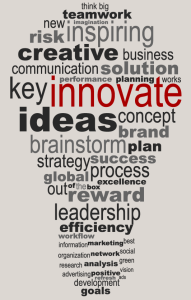Tips for Analyzing Customer Survey Data
Many companies now use customer surveys to accumulate data and learn more about what people want. If you're using this tool in your own business, do...

Change management guides how we prepare, equip and support individuals to successfully adopt change in order to drive organizational success and outcomes.
Anything that cannot be measured well cannot be properly understood and adapted. Change management requires both subjective and objective facts as well as qualitative and quantitative data. Generic metrics alone cannot establish comprehensive project purposes, scopes, and goals. Standard measurements, such as the overall number of end-users or the software development milestones, must be compared with irregular metrics, such as the employees’ expectations, technical skills and openness to change. Informal meetings with management will reveal their views on the change and help identify employees who are ambivalent or risk-averse. It’s best to focus on the activities that require the most internal attitude adjustments and external skill enhancements.
The key to employee acceptance and adoption of changes is personal engagement through small group meetings and one-on-one discussions. Succinct PowerPoint presentations with statistics and objectives are simply not effective as meaningful conversations that elicit feedback, uncover concerns and promote mutual understanding. Providing employees with opportunities to relate to the change will minimize resistance and increase confidence. For example, host an informal team meeting with authoritative employees who can share their successful experiences with similar systems or technology. Field management professionals tend to be more logical, but like all people, they use their hearts as well as their heads. Document behaviors and rank reactions in order to find resources, offer training and set a deadline for adoption.
An enthusiastic outsider with a fancy presentation and excellent interpersonal skills will only be able to reach so many employees. Major projects that require change management support need internal champions who should ideally come from all organizational levels. This will promote interdepartmental cooperation and elicit valuable feedback. The direct supervisors and managers of the employees most affected by the change will better understand how to increase buy-in and motivation. Create a change agent network by including other leaders who can lend credibility to the project. For example, a procurement manager may help field service tech staff adopt a new mobile device system by sharing their own experiences and challenges with similar technology updates.
It is critical to understand employees both on personal and professional levels. A change management initiative depends on the ability of the leader to cultivate trust, undercover issues, and resolve concerns. The majority of employees will accept change because they are flexible and dedicated, but there will always be a group that may be confused, misinformed, or defensive. Be honest about potential problems and negative impacts instead of sugar-coating issues. Acknowledge major challenges by offering support, solutions, resources, and training plans. Most change resistance can be avoided through preemptively cultivating trust, respect, and transparency.
Change management doesn’t end once the system is live, the apps are installed and the employees are trained. The adoption and implementation of new things generally follow a cycle that rarely reaches one-hundred percent right away. First, plan on having certain people accept new things more easily by preparing them to become the champions, team leaders, or training coordinators. Second, establish a training pipeline with milestones to help the majority of employees process and incorporate the change. Third, prepare to manage the naysayers by minimizing their ability to divert attention and undermine the change process. Remember that the 80/20 percent rule of HR applies to change management. Establishing clear deadlines, expectations and consequences will handle the negative 20 percent, while building a culture that embraces positive attitudes, proactive planning, and organized focus.
Finally, the most important role change management meetings play is to translate executive-level strategies and objectives into day-to-day discussions with the service teams about hands-on duties and responsibilities. One of the keys to any successful change initiative is the right technological tools, such as project management and workforce management system platforms.
Explore how to accelerate ROI in your field service organization.

Many companies now use customer surveys to accumulate data and learn more about what people want. If you're using this tool in your own business, do...

At the bottom line, field service is important because it touches customers’ lives. At ServicePower, we care not only about our customers, but about...

New Technologies Streamline Business Processes Integrating technology to improve field-service management isn't a new concept; implementing new...